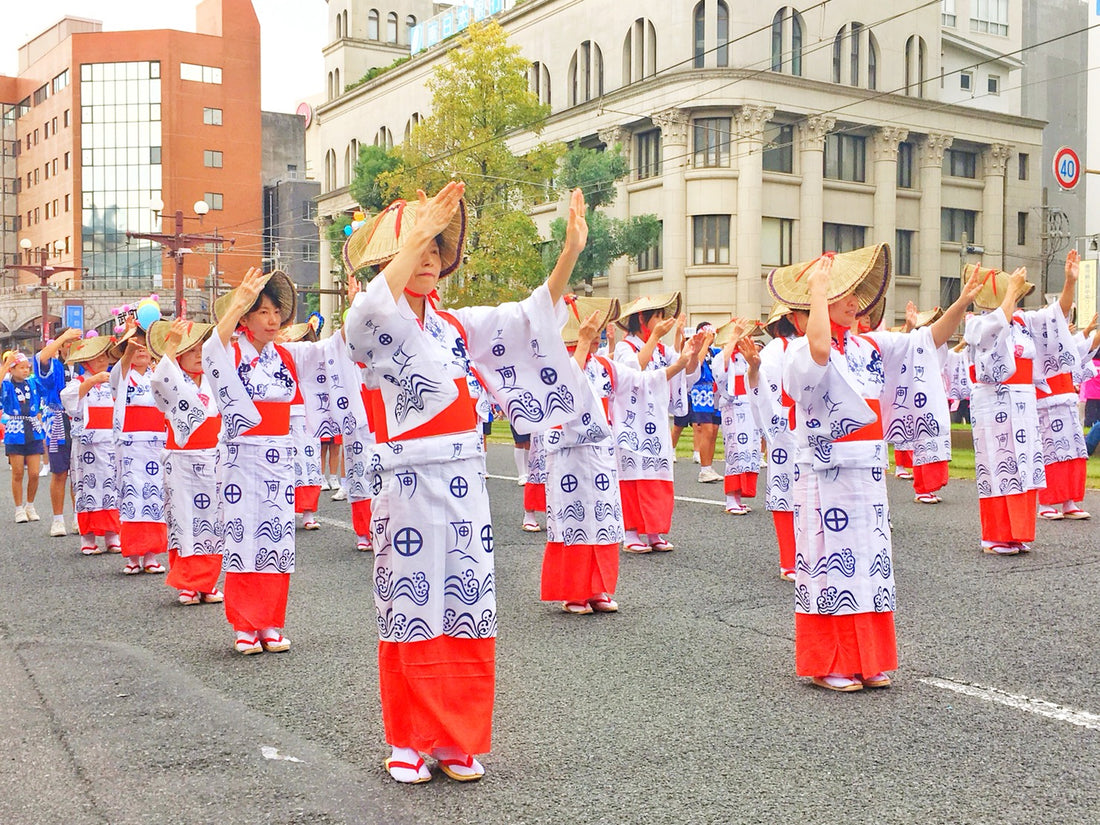Photo: Ohara Matsuri in 2017
It’s festival season in Kagoshima! A traditional or culture festival is called matsuri(祭り) in Japanese. While summer is a popular season for festivals, known as natsu matsuri (夏祭りsummer festival), in Kagoshima, autumn is the peak season for festivals. In particular the end of October and beginning of November offers some great events.
There are 4 major festivals being held in this time, including the Ohara Matsuri(おはら祭) and Yagoro-don Matsuri(弥五郎どん祭り), both recognized as one of Kagoshima’s top 3 festivals. Two others are Myoenji Mairi(妙円寺詣り) and Take-toro Bamboo Lantern Festival(竹灯籠まつり). Other festivals include Satsuma Sendai Hanya Matsuri(薩摩川内はんや祭り) and Taniyama Furusato Matsuri(谷山ふるさと祭り).
Halloween is also becoming increasingly popular with Halloween Parties held throughout the town. I am going to spread this topic over 2 articles. This article, I’ll introduce Myoenji Mairi and Ohara Matsuri.
Myoenji Mairi(妙円寺詣り)
Myoenji Mairi is a historic reenactment event held the 4th weekend of October. While this is officially the 68th year of the festival, the events and activities have been going on for hundreds of years. It all started in the year 1600 when the famous battle of Sekigahara was fought between the East and West armies to determine the fate of all Japan. The West army was in the midst of defeat and started retreating. While Kagoshima only having a small force of 1,000 samurai (East Army: 700,000 men, West Army: 800,000 men), Satsuma samurai are historically known as being fearless and proud warriors, so the Satsuma warriors refused to retreat, because showing your back to the enemy would disgrace them and Kagoshima. Instead they pushed forward and broke the lines of the enemy before looping around to escape without having turn their back. This action drew great respect from the enemy leaders. Only 80 of the 1,000 samurai returned home and all were enshrined at Tokushige Shrine in Hioki, Kagoshima. After that, every year, the Satsuma samurai made an annual visit to the shrine by walking in full armor from Terukuni Shrine in Kagoshima City to Tokushige Shrine. Nowadays, people continue to dress in samurai armor and make the trip every year.
The full walk is around 20 kilometers one way and offers a variety of beautiful views and historic sites. Many people join in regular clothing. If you would like to see and enjoy the festivities, you can walk the whole route, join in the middle, or just visit the Ijuin Town which is the final destination where everyone gathers in armor. If you like samurai and historic culture, this event is highly recommended.
Ohara Matsuri(おはら祭)
Ohara Matsuri is Kagoshima’s largest festival. It is held every November 2nd and 3rd. The main street of Tenmonkan Area in downtown Kagoshima is closed for a traditional dance festival with an estimated 200,000 dancers filling the streets. The Matsuri starts in the evening of November 2nd and continues during the morning and afternoon of the 3rd. The traditional dances tell stories of Kagoshima. The dance teams are made up of various companies, associations, and other groups from Kagoshima, but there is also open team that anyone can join if you want to be part of the fun. I recommend stopping by the Shochu Street event held nearby on the 2nd to try some local food and alcohol of Kagoshima.
In recent years, a second Ohara Matsuri is also held in Shibuya, Tokyo, and is known as the Shibuya Kagoshima Ohara Matsuri.

Author: Kagoshima Cameron

